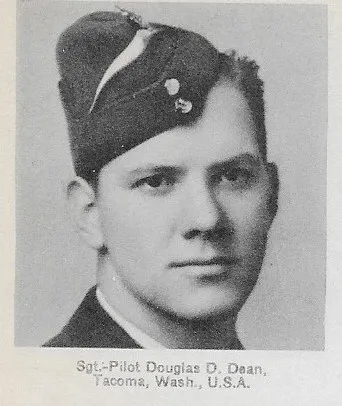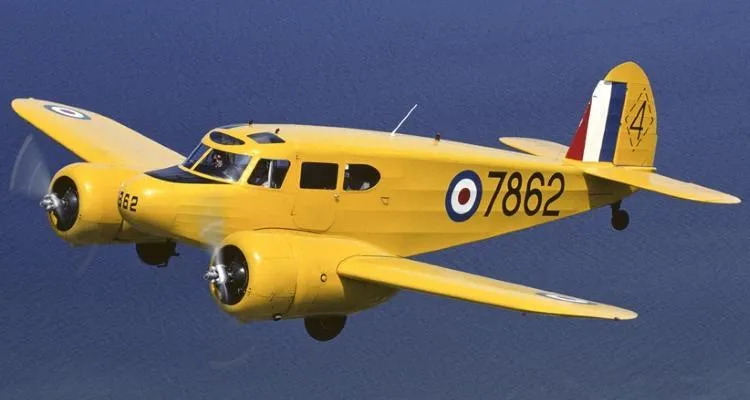Dean, Douglas Delbert (Sergeant)
Killed in Flying Accident 1942-April-09


Birth Date: 1921-October-08
Born: Tacoma, Washington
Parents: Cordelia Dean & the late Alvin P. Dean
Spouse:
Home: Tacoma, Washington, USA (mother)
Enlistment:
Enlistment Date: 1941-May-23
Service
RCAF
Unit
10 SFTS- Service Flying Training School (RAF)
Base
RCAF Stn. Dauphin, Manitoba
Rank
Sergeant
Position
Pilot
Service Numbers
R/106609
Crew or Other Personnel
Crane 7957
Crane serial: 7957

Canadian Warplane Heritage Museum
The Cessna T-50 Crane was the RCAF version of the Cessna AT-17 Bobcat, a twin-engined advanced trainer designed and made in the USA during the Second World War. It served to bridge the gap between single-engined trainers and twin-engined combat aircraft.
First flown in 1939, the American-built Cessna Crane was developed as a five-seat, light transport civilian aircraft. It was originally intended to serve only a minor role within the BCATP (an initial 180 were ordered in 1940) until the Canadian-built Avro Ansons became available in greater numbers. This was the first large order that Cessna had received for one of its products. Eventually, more than 5,400 Cranes would be produced, of which 826 saw service with the RCAF. Cessna Cranes were used primarily to teach future bomber pilots, after they had received their initial training, to fly multi-engined aircraft at Service Flying Training Schools in western Canada.
Powered by 245-horsepower Jacobs R-755-9 radial engines, Cessna Cranes featured wooden wings and tail married to a fuselage constructed of welded steel tubing. Most of the aircraft was fabric-covered. It was cheap, reliable and relatively easy to fly, with a top speed of 315 kilometres (195 miles) per hour.
The Crane provided twin-engined complexity with economy of operation and went on to become one of the most important aircraft used by the BCATP. Cranes continued to serve with the RCAF until 1947, after which many were purchased by private individuals and companies.
Nicknamed the Bamboo Bomber because of its largely wood construction, the Crane had a reputation as a stable and reliable aircraft. Although not an ideal training aircraft because of its poor single-engined performance and load-carrying capability, it performed its duties satisfactorily and helped train several thousand bomber pilots. Bomber Command Museum of Canada
Aircraft Images
Crane 7957
Crane Mk. I 7957
With No. 10 Service Flying Training School at Dauphin, Manitoba when it crashed at 15:00 on 9 (or 19?) April 1942, 7 miles north of Makinak, Manitoba (about 20 miles south-east of Dauphin aerodrome) while flying on instruments. Destroyed by post impact fire, Sgt. D.D. Dean and student killed. Scrapped by No. 10 SFTS.1941-09-16 Taken on Strength No. 2 Training Command 2019-08-20
1942-April-09 Accident: 10 Service Flying Training School Loc: SWest Of Makinak Manitoba Names: Bradley | Dean
1942-04-23 Struck off Strength Struck off, reduced to spares and produce 2019-08-20

